Dear Friends and Partners
I took slow and deliberate steps up through the powdery deep snow, while trying not to crack the brush. I was exhausted. It was all I could do to maintain silence in the thick rosebriars, bright in the moonlight. I checked my watch by that same light: 2:24 AM. It was my second time tonight to be out here, and the fifth time in a week.
I was stalking. I cradled my shotgun in my arms, and with my mitten, felt my baggy hip pocket in my Malone wool herringbone knit pants to find the reassuring bulge of backup ammo. Those heavy wools would keep me warm on such a night as this, and their deep pockets allowed another 20 shotgun rounds in my ammo stash.
The steep hill I was climbing leveled out in just another 100 feet, and there was the top of what we called the “bar ground” of Alderspring Ranch. It was a high irrigated hay meadow, now blanketed by snow, where I had been trying to feed our 200 head of mama cows.
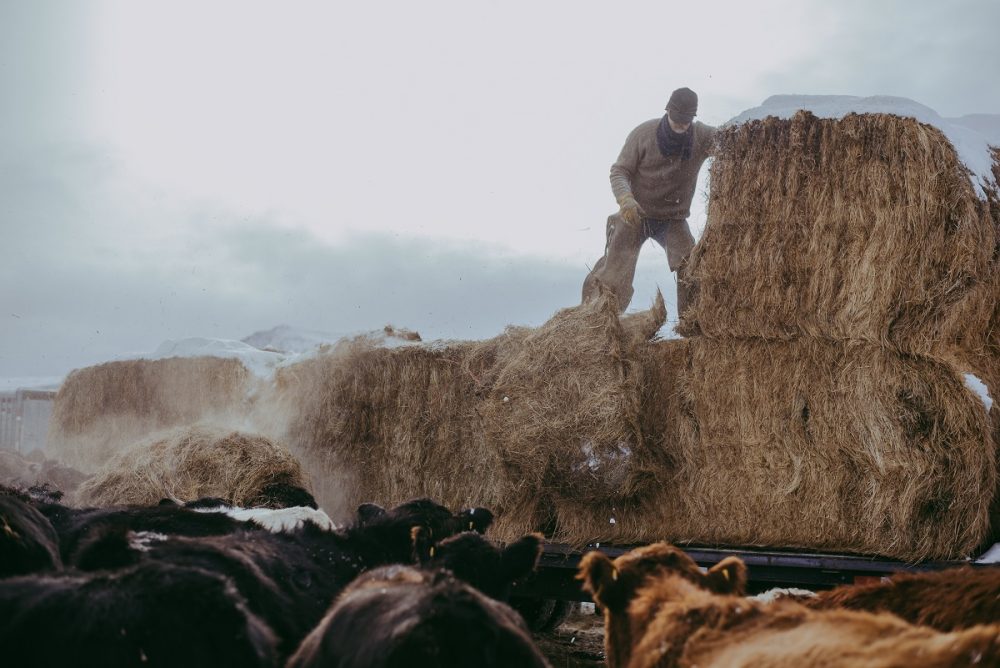
Hay was super expensive at the time, due to a rainy summer that prevented many ranchers from even harvesting their hay. Much of it went black with mold in the field before even picking it up in bales. Many farmers and ranchers waited for a dry enough break in the weather to just burn it all, to make way for a new crop rather than even bother baling it.
We barely got our hay crop in. I’ll never forget that day we managed to finish the last of it: Caryl on the hay baler in high gear, me on another tractor gathering, picking bales off the field as we watched a huge thunderhead, black, with curtains of rain falling below it, coming right for us from across the narrow Lemhi Valley. Just as we picked up the last bales, it poured.
Then, it was followed by a cold and deep snow winter. It further escalated hay prices. Baled grass became a precious commodity. I found myself on the phone at night, calling farmers even two states away, trying to get a semi loads of hay, a thousand miles away.
Most of those deals didn’t work out.
So we were really tight. Squeaky tight. It would rob you of sleep at night.
And then the elk came. By the hundreds they streamed in caravans off the Continental Divide out of Montana. We would watch with binoculars as they came single file off the high windswept ridges, in full migration for low elevations. Usually, they could find enough grass in the mid elevations on the south facing sun-warmed slopes.
But this year, even that failed them. Winter came in hard and fast, and a wind-hardened crust locked tight the forage reserves they were used to. Unreachable. And they became hungry.
Alderspring was a prime target.
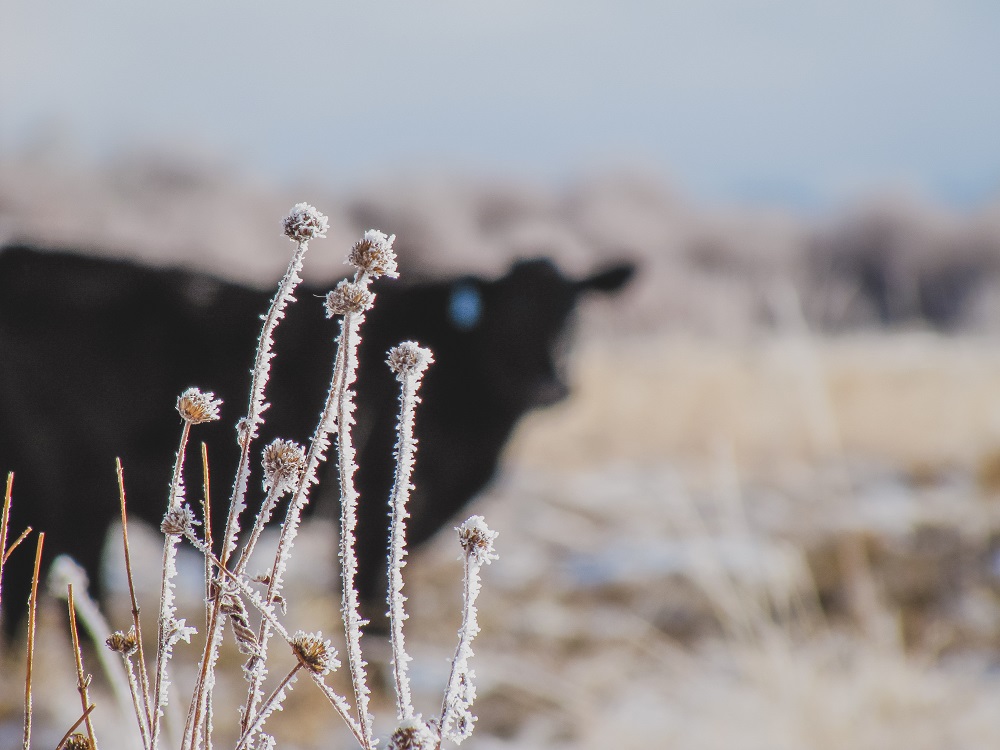
It started with a few wayfaring elk, drifting in when we fed the cattle in the afternoon. We liked feeding toward the end of the day, because as we got near calving, it minimized nighttime labors. Calves would be born more likely in the bright and warm of day, rather than in the cold and dark of night. They were far more likely to live. So we fed late.
It turned out the elk really liked this arrangement.
At first, it was only a few big bull elk that were forward enough to grab a free meal. Some of these sported magnificent antlers, with up to 7 big tines on a side. They each weighed somewhere in the excess of 800 pounds, and were simply stunning to watch come in. But we knew something was up, and within just a few days the nightmare began: a long thin line of elk, in single file, reaching over 1000 feet up the mountain face that soared up right next to our valley ranch, making their way down to join our cattle where they had just been fed.
It reminded me of old black and white photos I had seen of Yukon Klondike stampeders, climbing up Chilkoot pass in deep snow, seeking gold. These elk were climbing down, in deep snow, seeking grass.
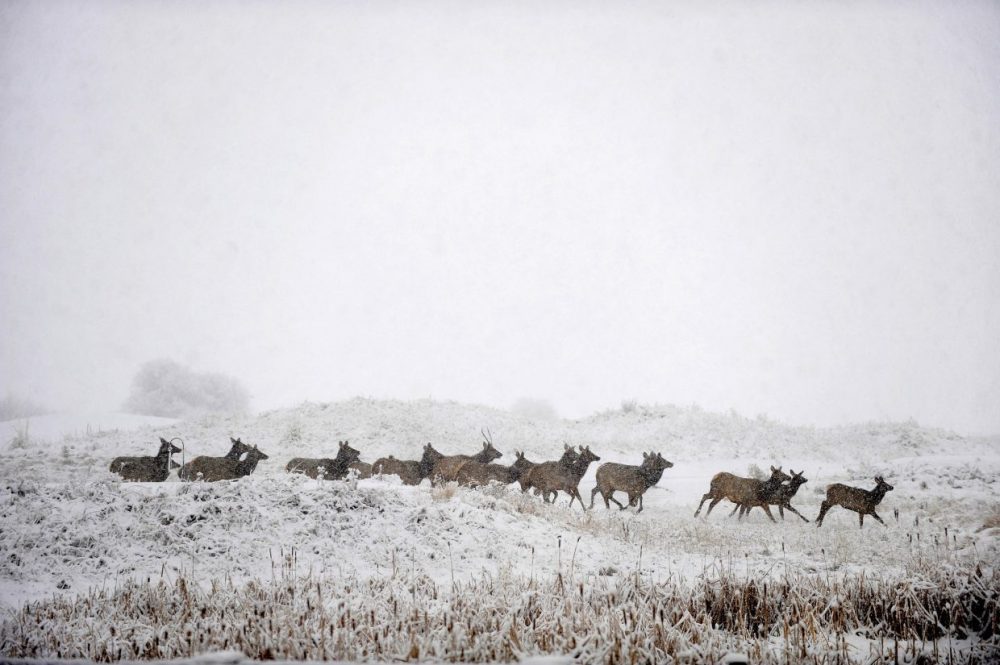
I grabbed my four-wheel drive pickup and roared up to the bar ground to see how things would work out. At first, the elk retreated. There were about 400 head in total, and the long thin line froze; some doubled back. After all, they are reclusive and wild animals, and weren’t about to stand blithely by while a human, especially with 3 cow dogs in the pickup bed approached.
But most of them patiently waited.
They knew, I think, this one thing about humans that most animals have pieced together in their wildly instinctive intellects, and that is that humans are impatient.
Or maybe, it has more to do with about who we have become as humans. I like to believe that humans before industrialization lived outside of timekeeping.
It reminds me of a story a friend told me about when visiting and living with the Masai tribe of Kenya. The people there were mildly amused about my friend’s apparent obsession with being on time. After all, he wore a watch and kept checking it to make sure of the time, and whether or not he was late.
One day, one of his newfound Masai friends observed, “You Americans have watches.” He smiled a white toothed grin contrasting against his face, while tapping on his wrist. “We Masai have time.”
And likewise, the elk waited me out. Some of them simply laid down. Others walked to the side of the deep snow trail and started digging with their hooves for buried grass and grazed. They knew it was just a matter of time.
And they were right. I had other chores to do. Caryl would have dinner on the table. I had kids down there that needed a Dad. I had to load hay for the next day. And so I left.
And in a few hours, as the sun slipped behind the mountains for another cold winter night, I stepped outside after a nice dinner with the family to finish up chores. The chickens needed locked in. The horses needed another bale of hay. The ice needed chopped down by the creek.
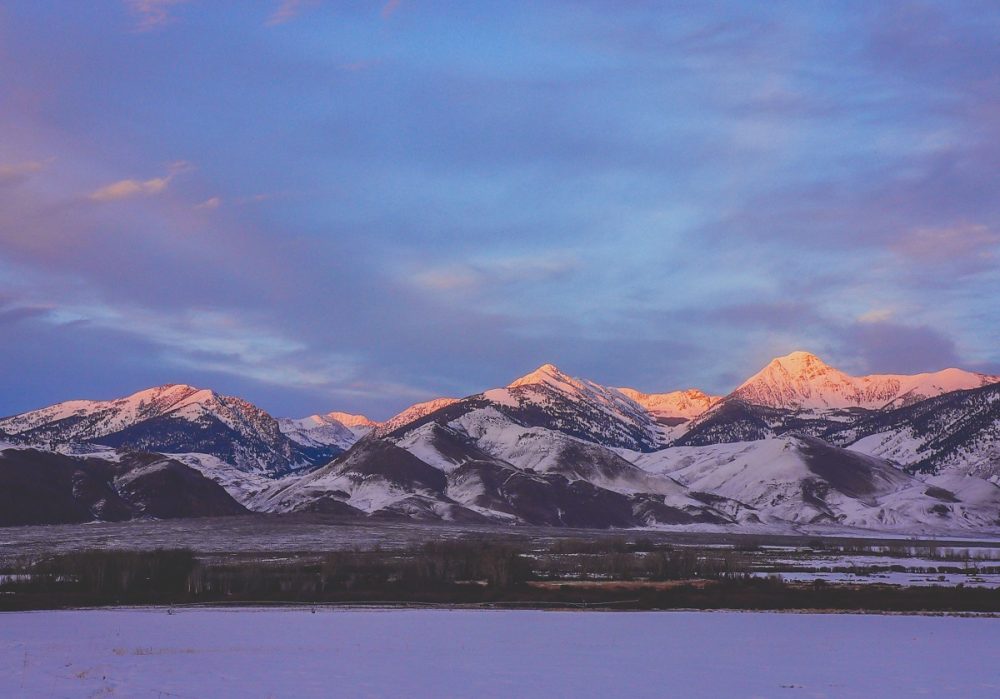
I didn’t want to look, but I had to: There were no longer any elk on the mountain. I knew they were all with our beeves.
I jumped in Caspar, our trusty ’72 ford, and roared up to the bar. The elk had fairly run off our herd of only 200 cows, and had now completely dominated the gravy train of green grass hay that I had laid our for the beeves earlier. And they ran, in an attempt to make me think my approach was effective, but I had seen the drill before on my neighbor’s place: it was only a ruse to get me to go home to bed.
They would be back.
You would think running would expend unnecessary energy. But elk are born to run. They are built for their graceful, loping stride. I think they find joy in it. And they would find even more joy when they ran back in 15 minutes. And they would be gleeful to find that I was gone again.
And so, that night, I called my contact person at Idaho Department of Fish and Game. “Bret. It’s Glenn, up in Tendoy. These elk are gonna kill my hay pile, and are running off my cattle. What can I do?”
It was outside normal hunting seasons. I needed to get them to move on to south slopes just a few miles away that had abundant grass in lower elevations, just a few miles distant, rather than getting them used to the gravy train of our hard-earned hay pile.
“Got a shotgun?” Bret asked.
“What?”
“Yep. With bird shot. No buck. Bird shot won’t penetrate their thick hides, ‘cept at real close range, and they ain’t gonna let you ever get that close. No head shots. Just get ’em in the ass.”
“And you’re OK with that?”
“Yeah. We can’t have elk start depending on hay when there is graze accessible. And there is. It is not that hard of a winter. We fly helicopters taking inventory, and there is feed available in the valley. You just gotta keep ’em moving on.”
I thanked Bret, hung up and checked my shell stash. Caryl and I liked to hunt grouse in the high timber every fall, and had plenty. I was good to go.
And at first, it was working. I whacked a few rounds off at the herd on the first night, and the entire four hundred head went to running! I ran after them, me gleeful this time, firing shots after them, raining them with birdshot like hail over the herd before me. Unfortunately, they were far better at loping through deep white than I was, and soon I was out of breath, but satisfied. I watched them head for the hills where they belonged.
I almost felt like the successful hunter I had often been. I had met nature on her own terms and won! I slept good that night.
But the next morning, over coffee in first light, I saw the long thin line emerging—going up—from my bar ground as if the entire event was a dream. They had come back in the night.
I jumped in the pickup to view damages. When I got up to the bar, the cattle were waiting for me. Hungry. And not a lick of hay to be found. The elk had vaporized it.
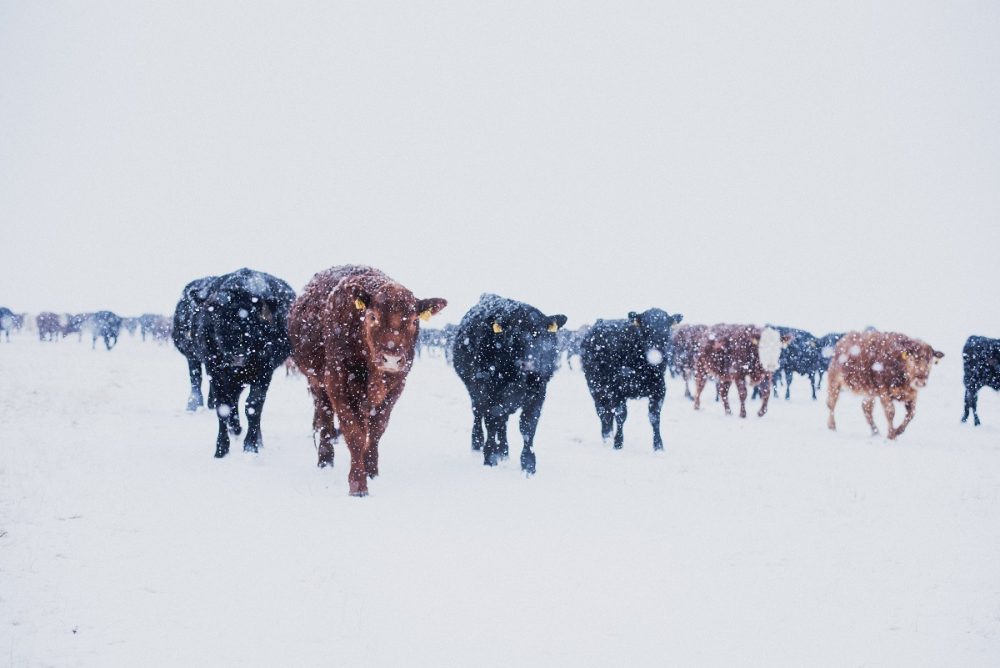
And so I started the elk wars. Every few hours I’d awake, and head up on my stalk. Afoot. In the dark. In snowfall, and crystal clear moonlight. And kept them off. Eventually, they trained very well to find what the pain of distance relationship to shotgun was. They developed a calibrated eye to just how far off they could stand and receive birdshot without pain.
I was beaten, exhausted, tired, and going broke on hay. I had hungry cattle. I picked up the phone. “Bret?”
“Yep.”
“Ain’t working anymore.”
“Dang. That’s too bad. I guess we’ll have to start harvesting some. That’s gonna get them moving.”
And so, over the next few days, Bret would send a hunter up. It was somebody from the community, several that I knew really well from Salmon, that signed up, hoping for a little winter meat. Most folks around our mountain communities hunt and harvest elk for their freezer. It’s wild meat that we used to harvest. Every year, before we found ourselves with extra beef, we were sure to bring home an elk. It was a real blessing.
At first, the elk returned, albeit tentatively. But they’re pretty quick on the uptake, and after only 3 were dispatched for local freezers, the entire herd of 400 simply vanished. We never saw them again. There were several thousand grazing south slopes just up the valley from us. Perhaps they just joined the happy throng one night.
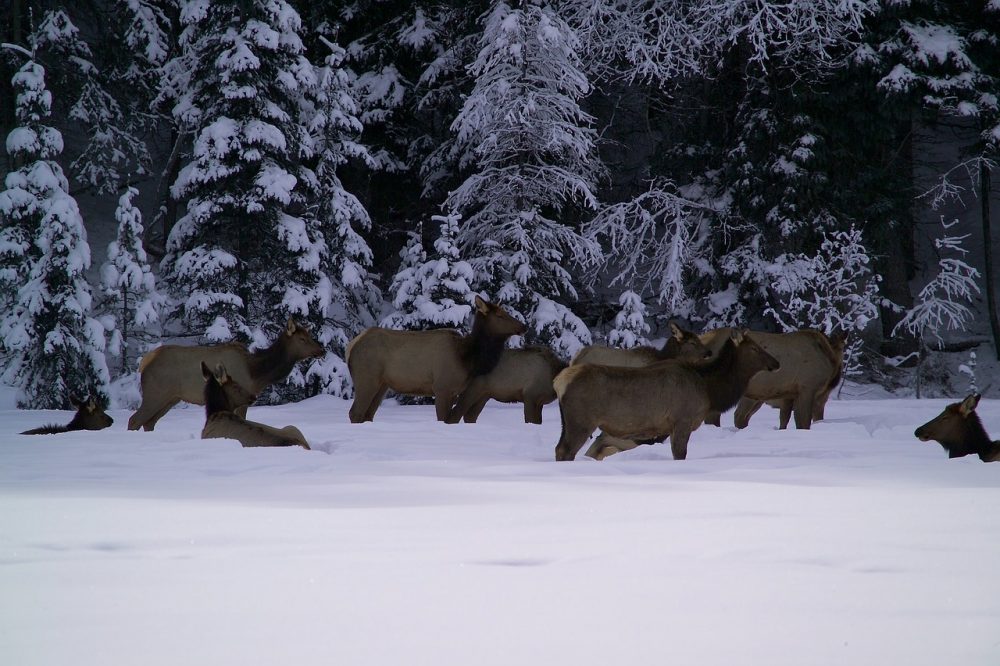
And finally, winter relented, and before we knew it, our beeves were up to their eyeballs on rich grass. And the elk and the winter—the snows and the subzero were just a memory. The big wild ungulates were long gone to summer ranges in Montana’s high timber on the Big Hole Divide and shed their thick coats and bleached horns. Their heads had new adornments of velvety antlers and their coats a rich reddish umber.
And we looked to the burgeoning hay crop of a new season. It looked to be a good one this year. Maybe this time, we would get it up handily, and winter would be an easier one.
But maybe not.
I remember talking to Jack, one of my neighbors, 3rd generation in this valley, about how hard it was the year prior. He smiled at me and said, “Glenn, Pahsimeroi’s some of the best next year country I’ve ever been in. You always hope it’s gonna be better next year.” He grinned. “Kinda keeps you goin’—ya know what I mean? It’s why we’re still here.”
I reckon I’ll take that.
Happy Trails.
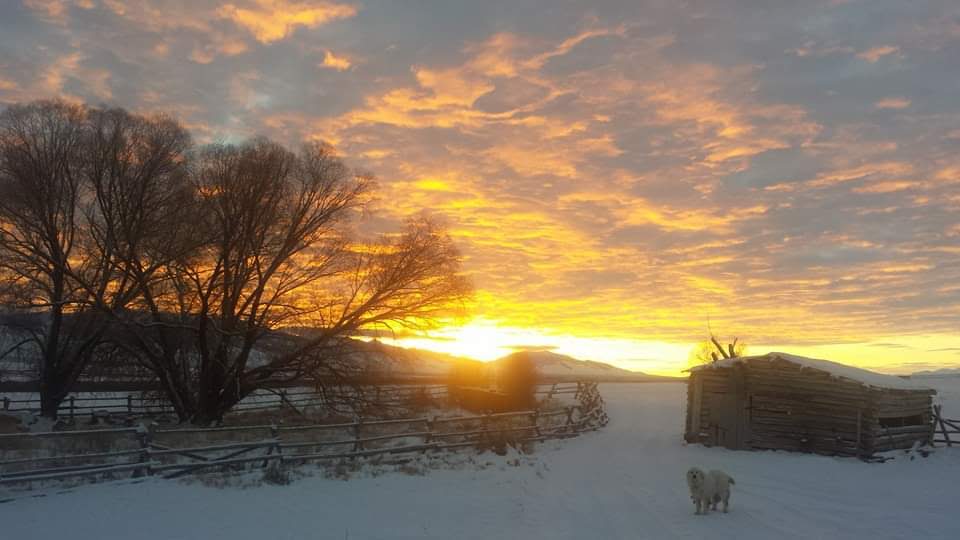

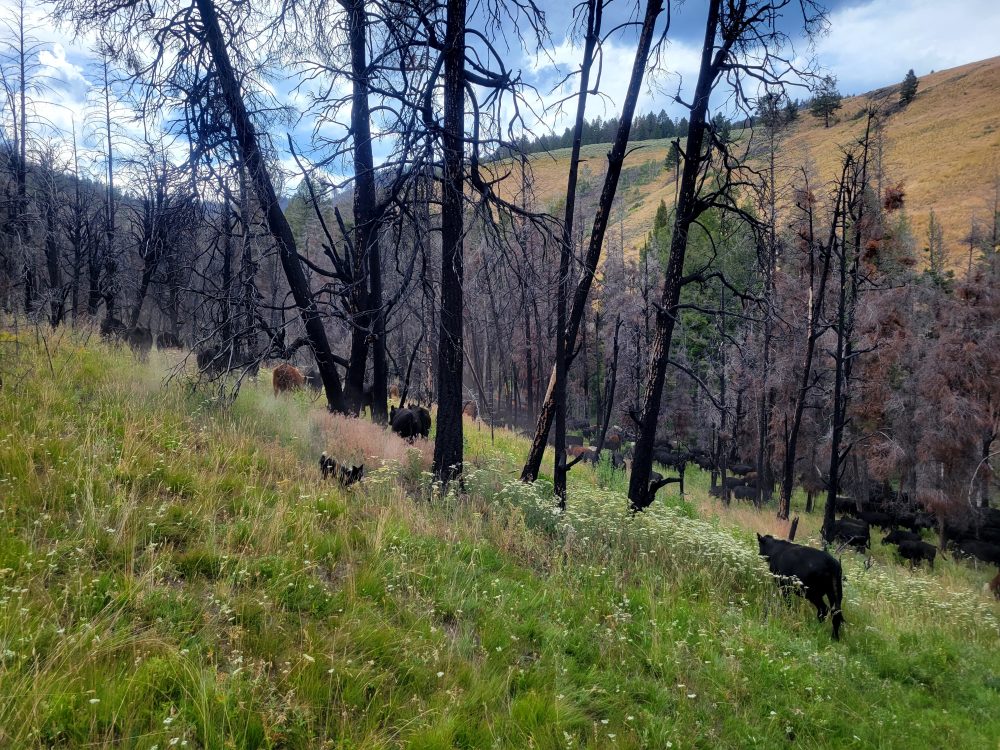


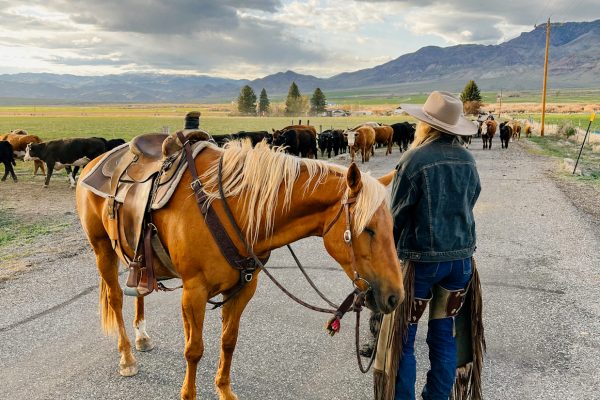


Craig Gisler
Great story I could almost feel the cold wind on my face and smell the elk. Thanks.
Carole Perry
I really enjoy your stories and an grateful to family farms and ranches that provide us with wholesome food!
Mary Ann Newcomer
You folks are awesome. I appreciate all you do and you are a gifted storyteller. Thanks.